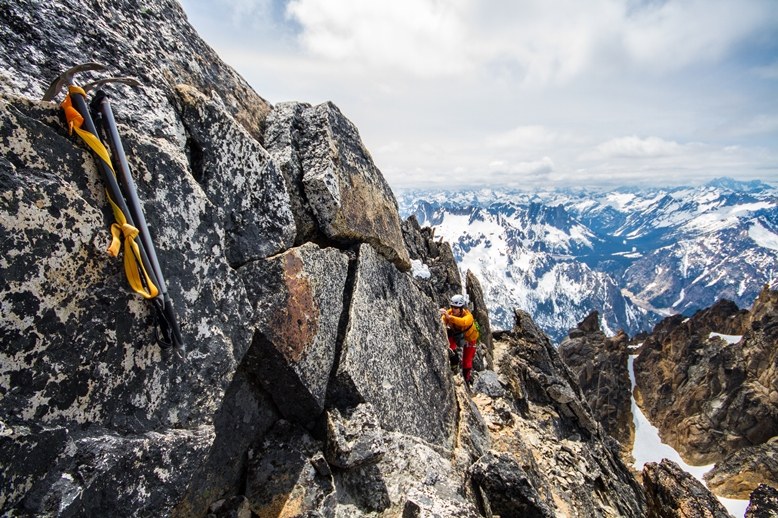
Spring is turning to summer, which means we'll soon have more folks out on the trails and in the hills. Most climbers will probably do conditioning hikes or easier alpine scrambles to get started, but even on these easier outings, mishaps can occur. Here are some pointers to stay safe out there.
This time of the year is notorious for wet, slippery rock. As the weather gets nicer, the leftover snow from winter is melting off and trickling along the trails as well. Wet roots and slick rocks are the main hazards out there, but also the leftover snow itself can be treacherous. On shady portions of the trail, that snow can get pretty icy and hard after a series of freeze-thaw cycles.
Already this season the club has had a couple of small slips and falls: one on Mt. Ellinor, and another on Granite. It is important to note that both of these incidents happened on the descent. On the way down, hikers are already tired from the effort they've put forth to reach their summit or objective. It's easy to lose focus on the trail ahead once you start dreaming of pizza and beers on the way home. The "back to the barn" syndrome can even kick in a little and increase the speed of descent. These mental slips, along with a heavy pack, are a recipe for a slip, fall, twisted ankle, sprained knee or even worse.
10 tips For a smooth descent back to the car:
- Don't rush - keep a nice, steady pace.
- Stay focused on the trail ahead of you.
- The steeper the incline, the shorter your steps should be.
- Keep your weight over your feet, and be sure you account for the weight of your pack as well. When you are going downhill - especially steeper sections - it's our natural tendency to lean back away from the slope. This is actually more dangerous as you are more likely to have your feet slip out from under you if center of mass shifts backwards.
- If you use trekking poles when you hike, extend them a little longer than normal for the descent so you don't have to reach as far forward with them.
- Avoid areas of loose gravel or sand, especially if it is a thin layer of loose material on top of a smooth rock slab. That loose gravel is like ball bearings, and with one misstep you'll quickly find yourself in trouble.
- In early season, there are often blown-down trees crossing the trail. If you encounter an obstacle like this, try to step over it and on to solid ground again. Avoid stepping on to the log directly, as bark itself can be slick or the bark can become detached from the main wood of the tree and slide as you step on it. Use the utmost caution when stepping on patches of bare wood, especially exposed tree roots along the trail, as they can be extremely slick. If the log is so large that it is unavoidable, look for rougher dry patches of bark that will offer good traction.
- If you have to cross patches of snow, softer unconsolidated snow is typically going to give you better traction than the harder, icy areas.
- If you are transitioning from snow on to rock, take a quick second to kick your boot against the base of the rock to knock off as much snow and moisture as you can before stepping on to the rock.
- Keep a little bit of room between yourself and your other teammates on the trail. If someone else slips, this buffer will help reduce the chances of a domino-effect and you getting knocked off balance as well.
Hopefully these tips will help keep you incident free on the way down from your spring ascents. I look forward to seeing you on the trail! - James
 James Pierson
James Pierson